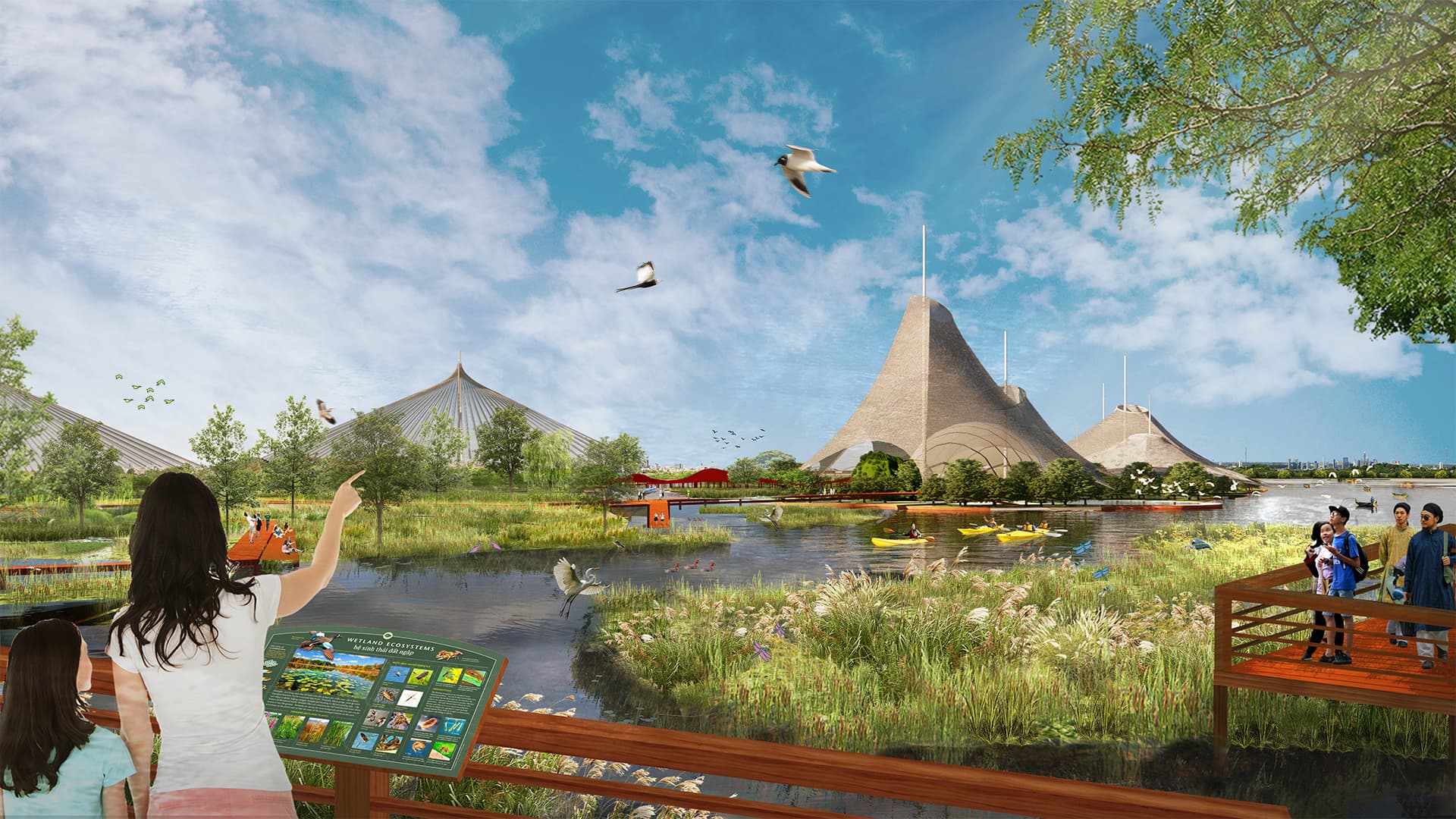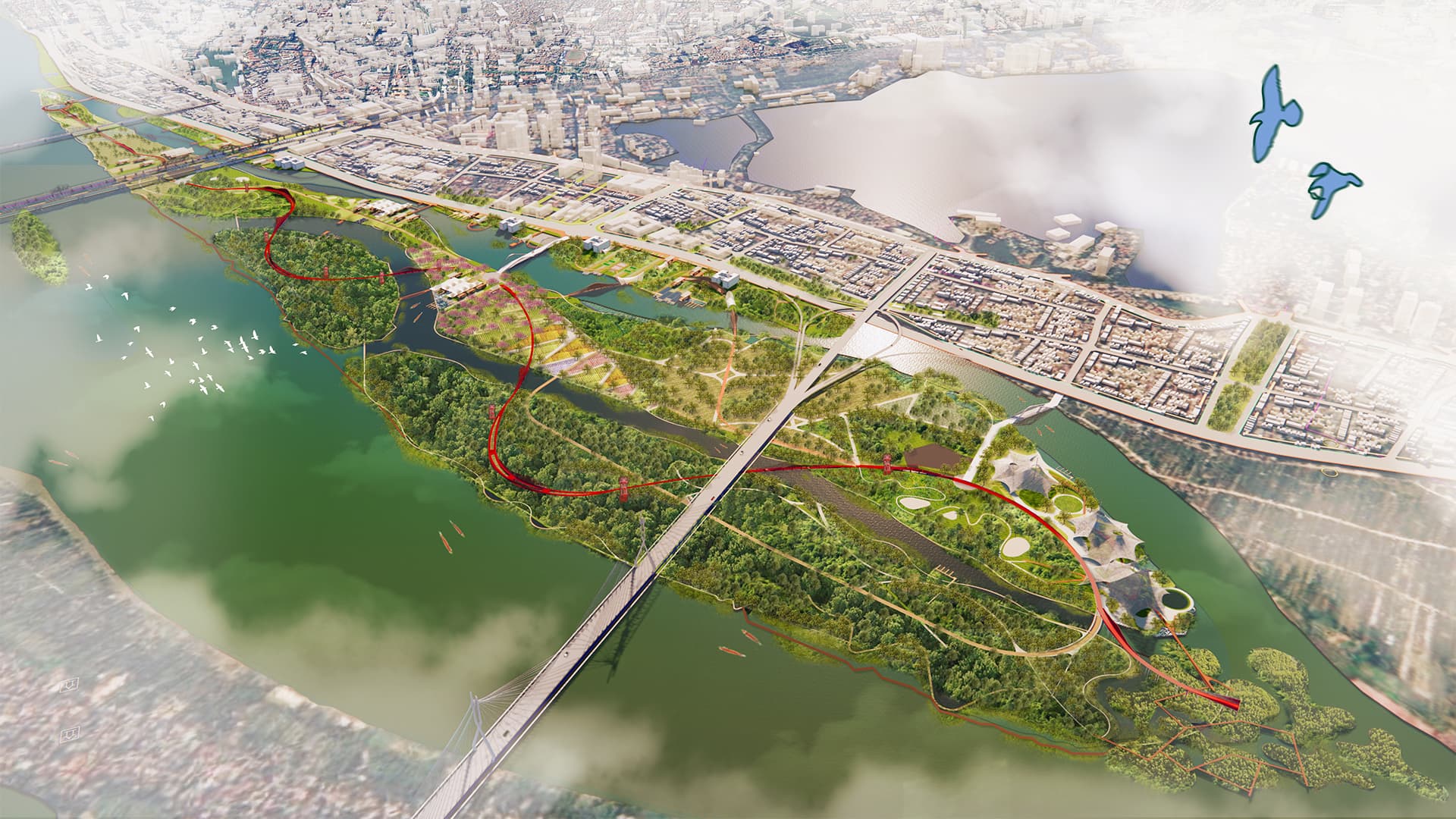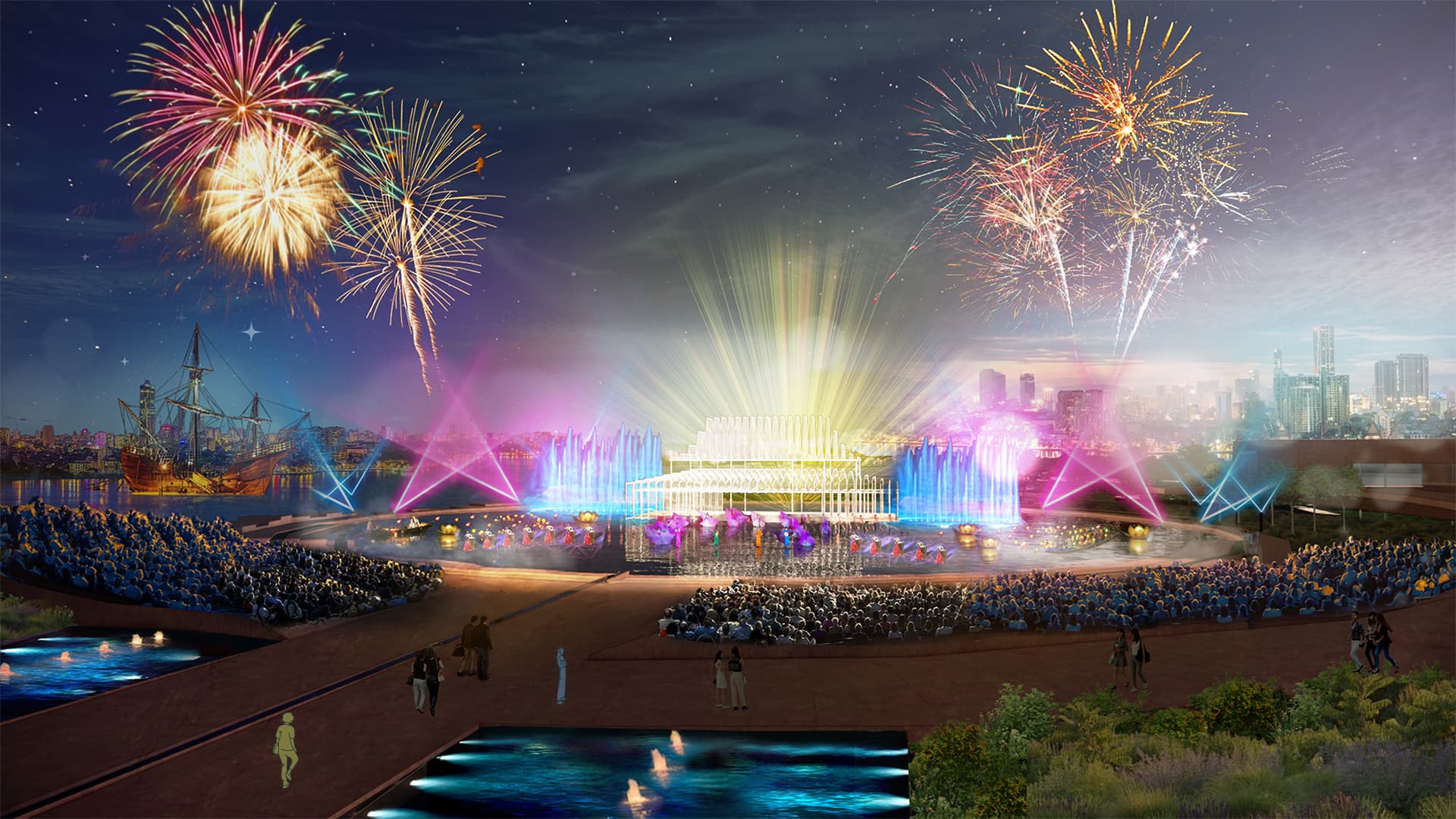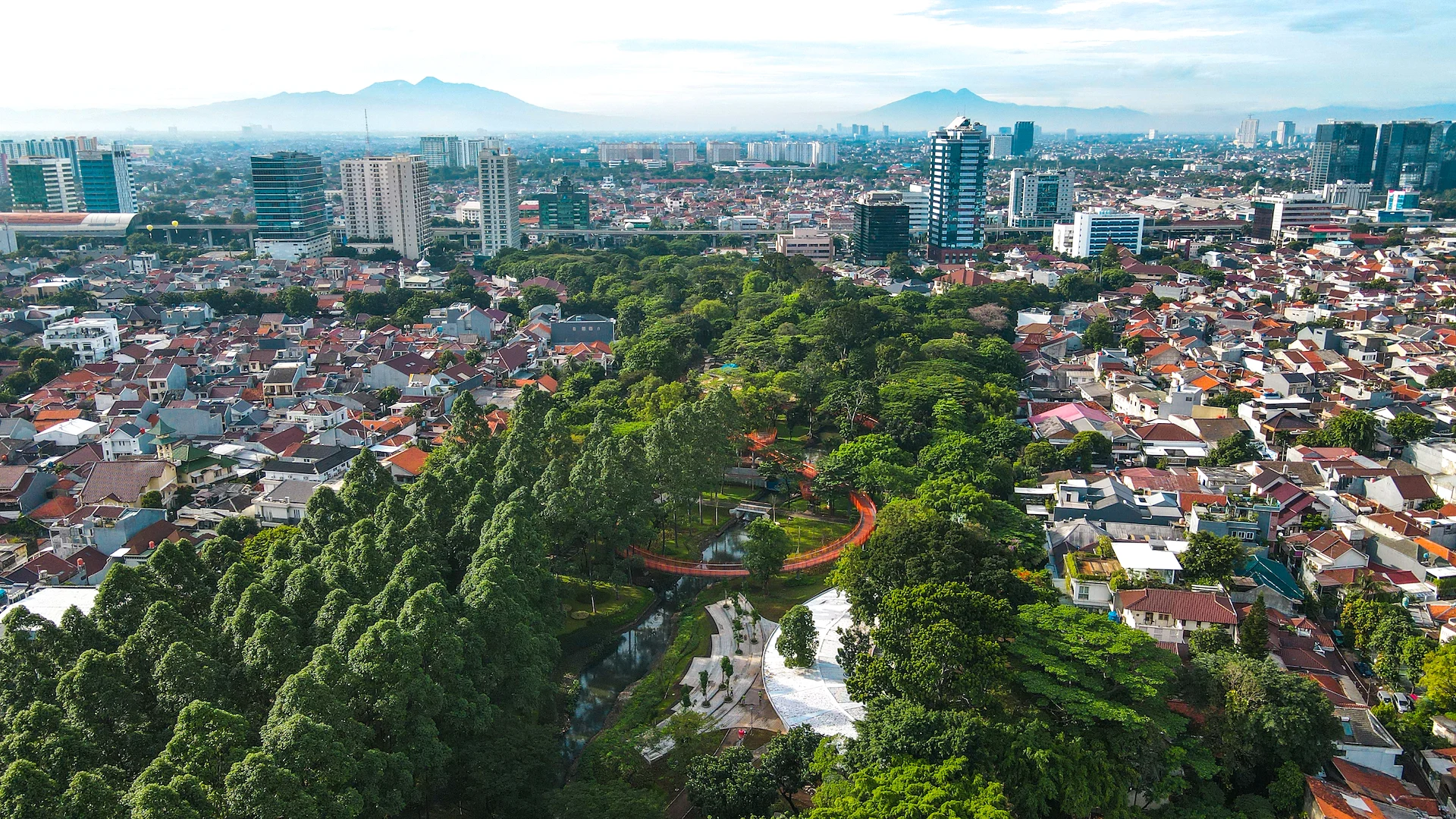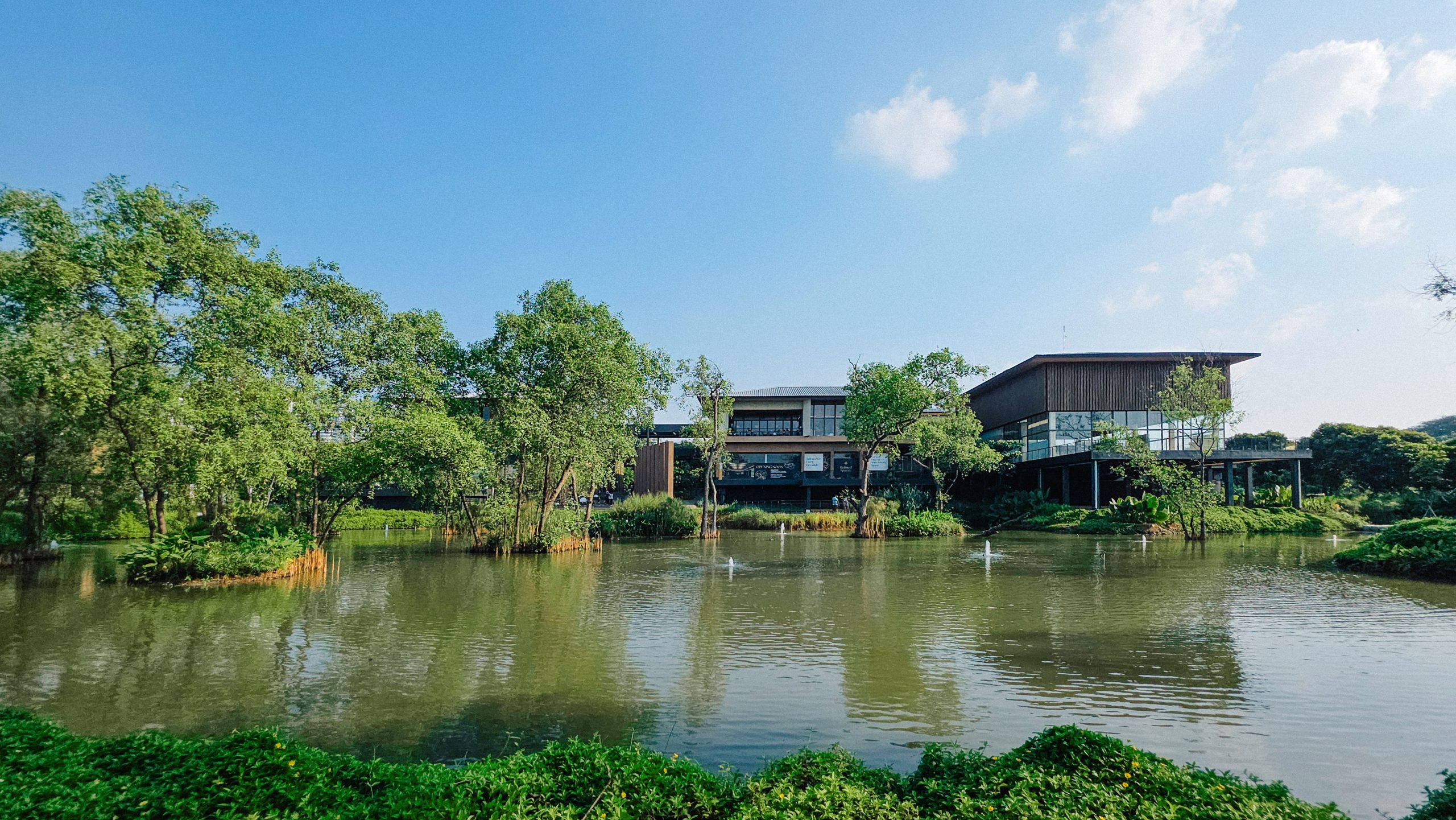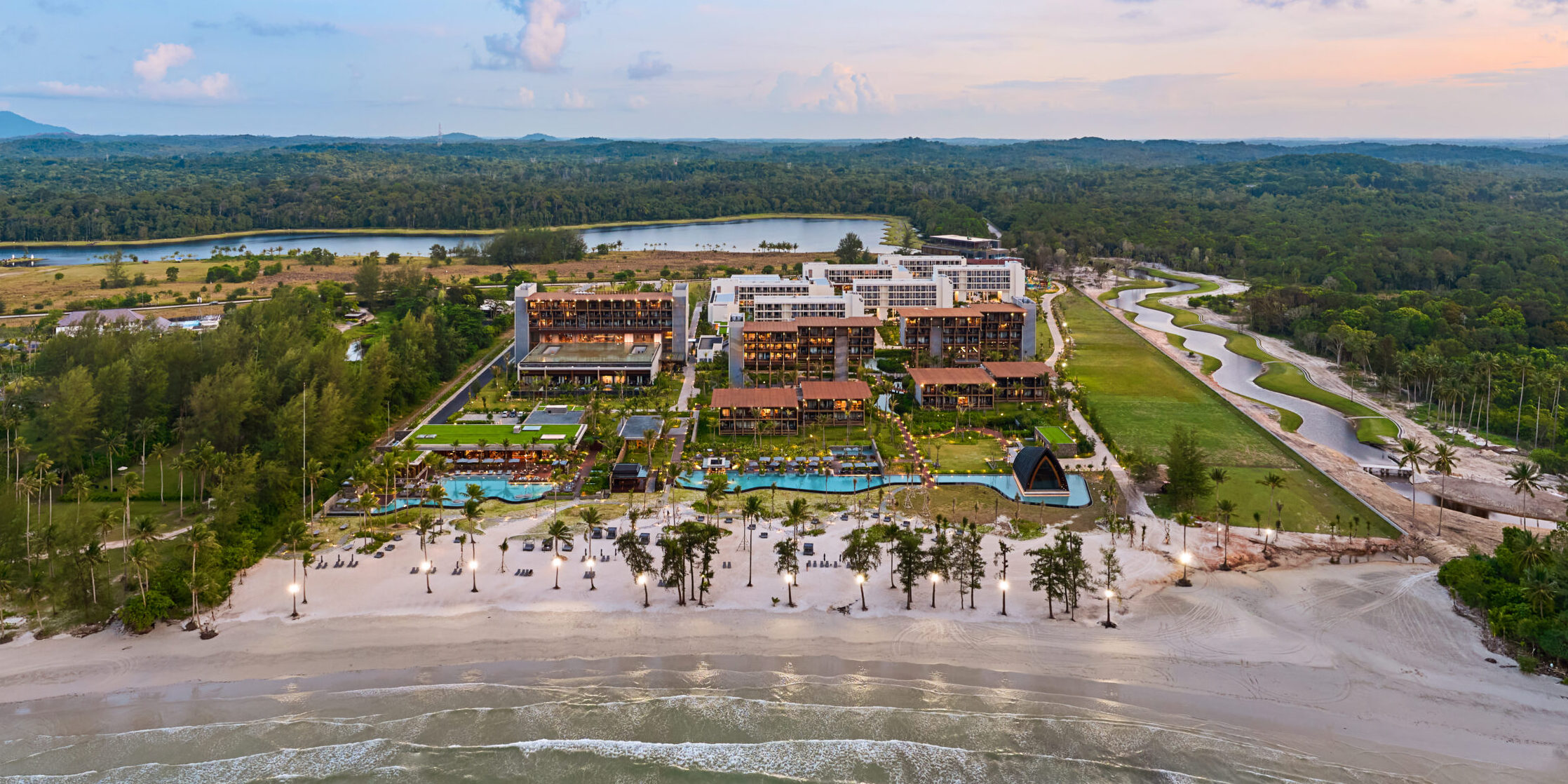Hanoi Dragon Park restores Hanoi’s bond with its river. Inspired by the Ly Dynasty dragon, it flows along Hồng river as civic spine, cultural symbol, and ecological embrace. Floods, gardens, and gatherings converge, turning the Red River from forgotten edge into living heart of the city.
- Excellence in Urban Design, Placemaking & Public SpaceSingapore Institute of Planners Awards 2025
- Top 3 Winner Design CompetitionRed River Competition, Vietnam 2024
A rare opportunity to reconnect city and river through landscape
At the edge of Hanoi’s dense urban core, the Red River’s midstream islands and sandbars remain some of the last undeveloped stretches of natural terrain. Though ecologically rich, these flood-prone areas suffer from fragmentation, pollution, and neglect. This site presents a unique opportunity to reshape Hanoi’s relationship with its river, shifting from a boundary to a connective, living system.
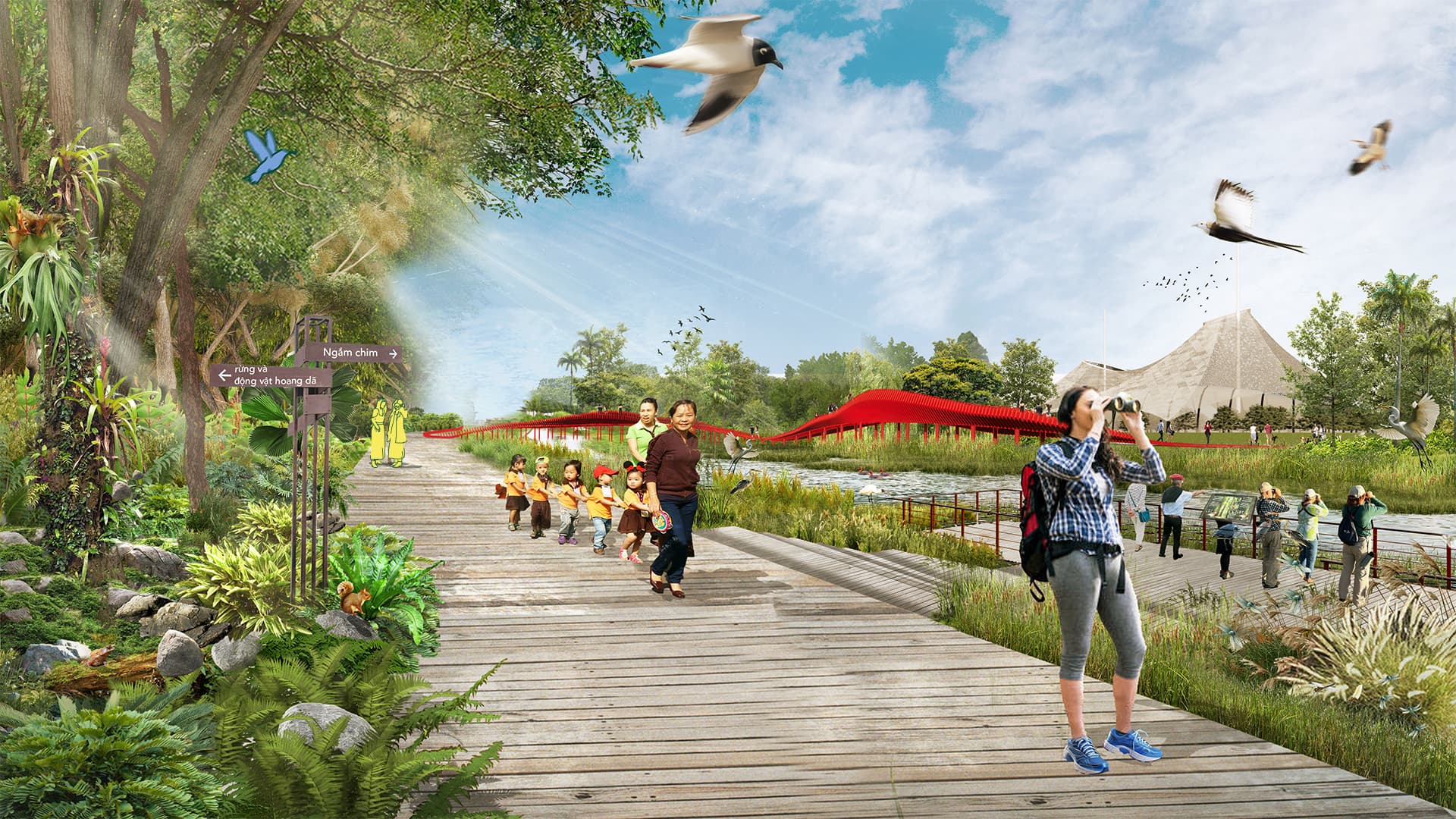
Designing with the river means embracing its unpredictability
The site’s frequent flooding, unstable sediment, and exposure to shifting currents required a design approach that could adapt to dynamic hydrological conditions. At the same time, the vast scale of the site posed a spatial challenge: to create meaningful, human-scaled spaces without compromising ecological continuity or flood resilience.
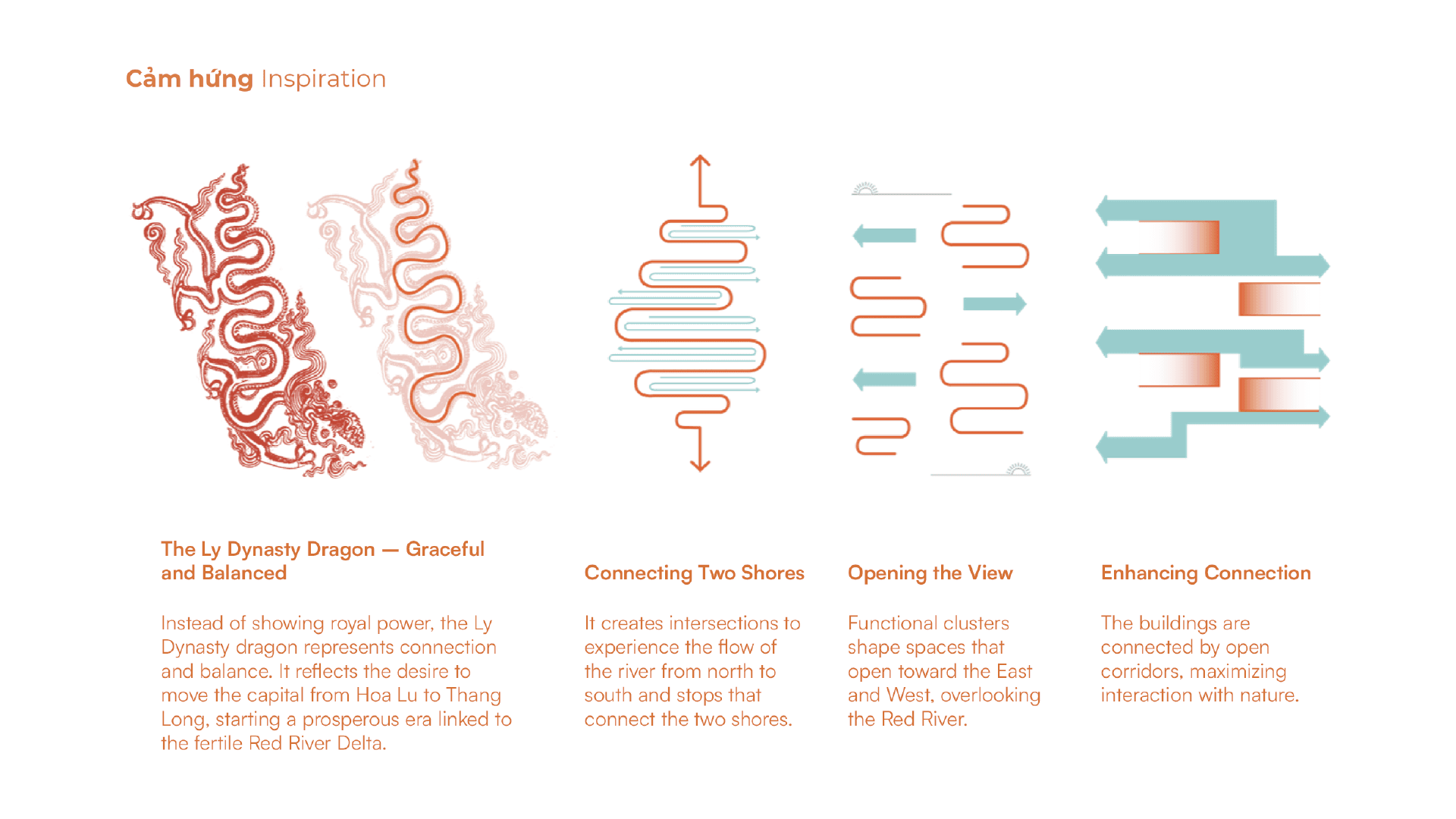


The park becomes both civic infrastructure and ecological restoration
Dragon park is conceived as a regenerative urban landscape that restores ecology, reconnects communities, and redefines riverside life, The design aligns with the river’s natural rhythm, layering public space and biodiversity across varying flood zones. A central spine organizes cultural and recreational destinations, while loops of pedestrian pathways weave through sandbar forests, wetlands, and seasonally changing edges.
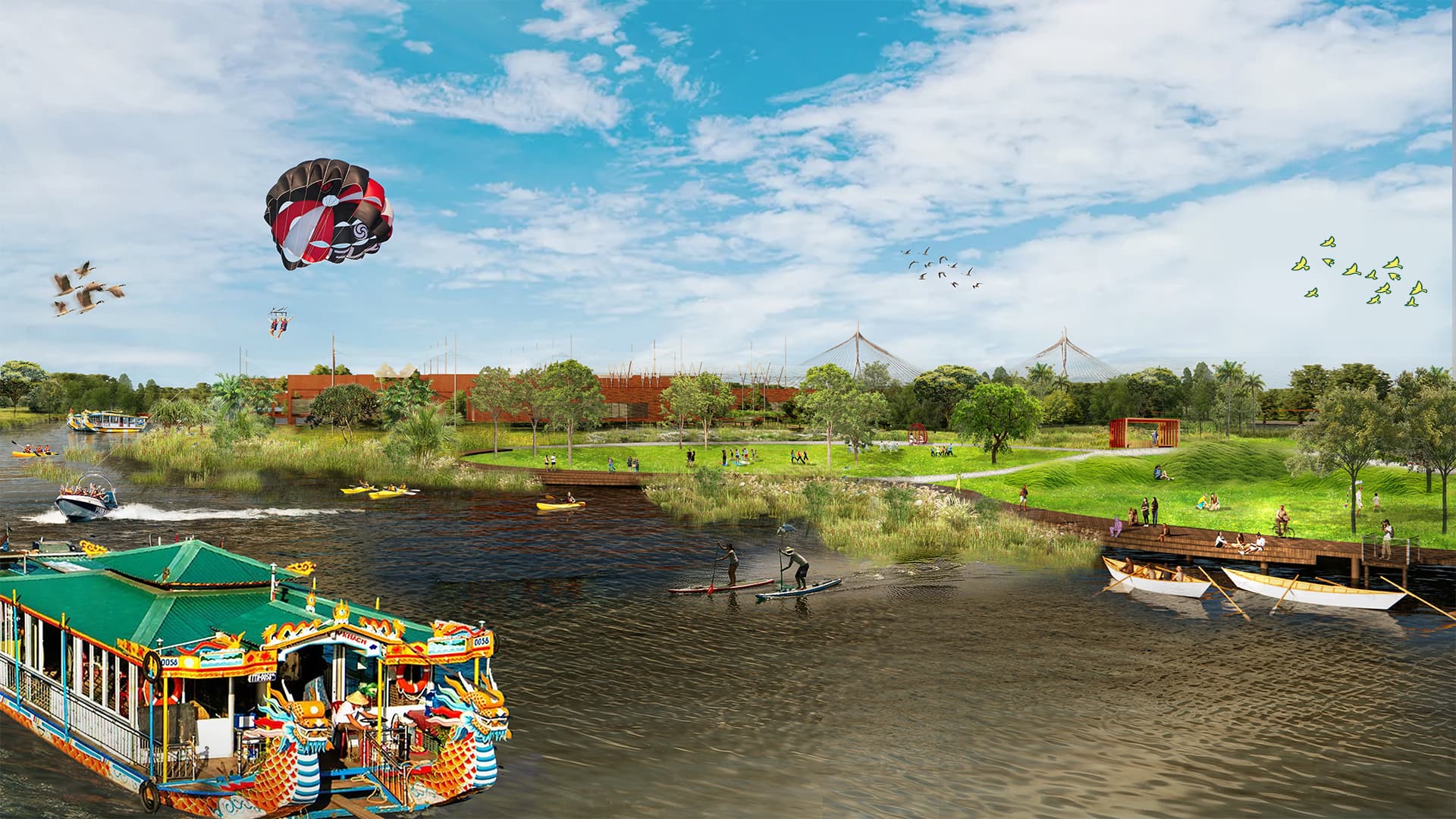

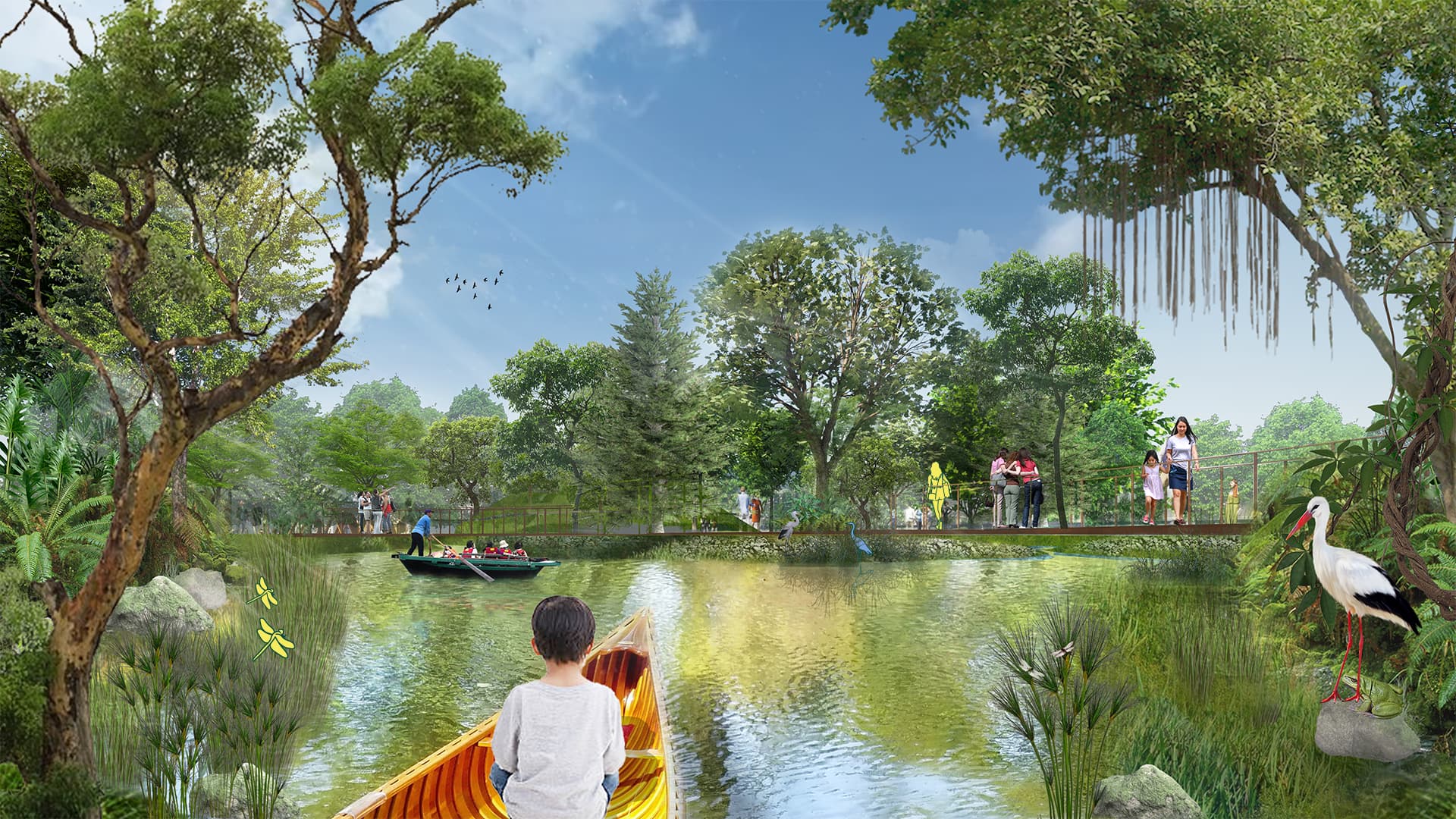
The landscape performs multiple roles. It buffers floodwaters, restore native vegetation, and invites visitors into immersive, nature-based experiences. Each program, whether an event lawn, bird habitat, or viewing terrace, is nested within this ecological matrix. By transforming underutilized river land into a hybrid of public park and riparian system, the project introduces a new civic identity where urban vitality meets ecological performance.
